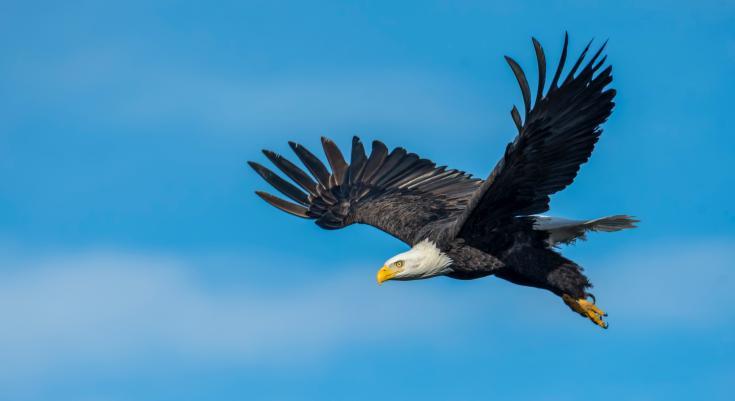
In September 2022, a temporary cone was installed on the eagle’s nest located on the corner of Ross Drive and Birney Avenue in Wesbrook Village to protect the eagles from noise and support successful breeding during construction of a residential development adjacent to the established nest.
At the time, many campus residents had questions about why the nest was being coned and concerns about the impact on the eagles and the biodiversity of the campus. For some, there continue to be questions and concerns and there has been a request to remove the cone. We wanted to answer those questions and share an update on the nest.
An earlier online post provides detailed information on why the nest was coned, the process that led to the decision, why the site for the alternate nest was chosen and a timeline that starts with the discovery of the nest in 2011. There is also a series of FAQ’s that cover a range of topics, including why Lot 6 is being developed even though it is within a recommended vegetation buffer and what actions have been taken to protect the nest during construction period. The Protected Species Management Plan for the eagle habitat is also available for download on the Campus and Community Planning website.
UBC creates sustainable residential communities with a variety of housing options, including rental housing for faculty and staff, market rental and leasehold housing, and a range of amenities and services. The development on the lot across from the originals eagle’s nest is part of the implementation of UBC’s Wesbrook Place Neighbourhood plan, which delivers on our commitment to offer different types of housing opportunities on campus to support the university and its community.
While bald eagles are considered tolerant of human activity, construction noise can impact the eagle’s nesting and breeding activity. With construction on Lot 6 set to start this summer, the BC Ministry of Forests (in consultation with a Qualified Environmental Professional and the Hancock Wildlife Foundation, a leading conservation organization that specializes in the protection of bald eagles) provided direction to cone the nest to temporarily direct nesting activity away from the construction noise and give the eagles the best chance for breeding success. This continues to be the advised course of action to protect the eagle habitat and as a result, the cone will remain in place.
A Qualified Environmental Professional (QEP) from Diamond Head Consulting has been monitoring the nest to observe the eagles’ behavior and track noise levels and other potential disturbance factors as the result of ongoing activity in the area. Throughout these monitoring sessions it was observed that there was no eagle activity in the original nest or alternate nest. However, a pair of eagles have been spotted circling the area and perching in trees with good views of the area. Three raptors nest have been identified along Old SW Marine Drive in Pacific Spirit Regional Park. The QEP will continue to monitor all the identified nests to determine if the eagle pair have adopted an alternate nest in the area. The most recent monitoring report from Diamond Head Consulting is available online.
According to experts, eagles will return to their previous nesting area in the fall then begin nesting when they are ready to breed and lay eggs, sometime between January and April. It isn’t uncommon for eagles to use more than one nest in their breeding territory.
Development in this area is guided by the Wesbrook Place Neighborhood Plan, which has been shaped by direction from the University, community input, technical analysis and an environmental assessment. Further, each development within the neighbourhood goes through a Development Permit process, which includes a Public Open House to ensure residents are aware of a project and can provide feedback on the architectural, landscape and other related plans. Engagement with the community on neighbourhood developments and other campus planning projects is guided by Campus + Community Planning’s Engagement Charter, which is reviewed and enhanced regularly.
To stay up to date on projects on campus and ways to get involved, follow Campus and Community Planning on social (Twitter, Facebook and Instagram) and sign up for the quarterly newsletter.